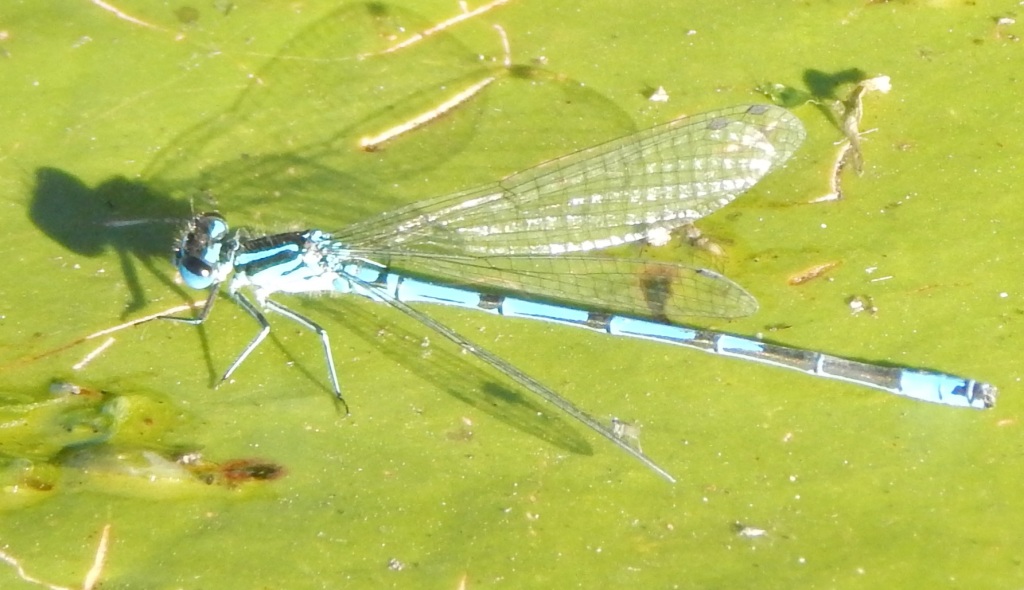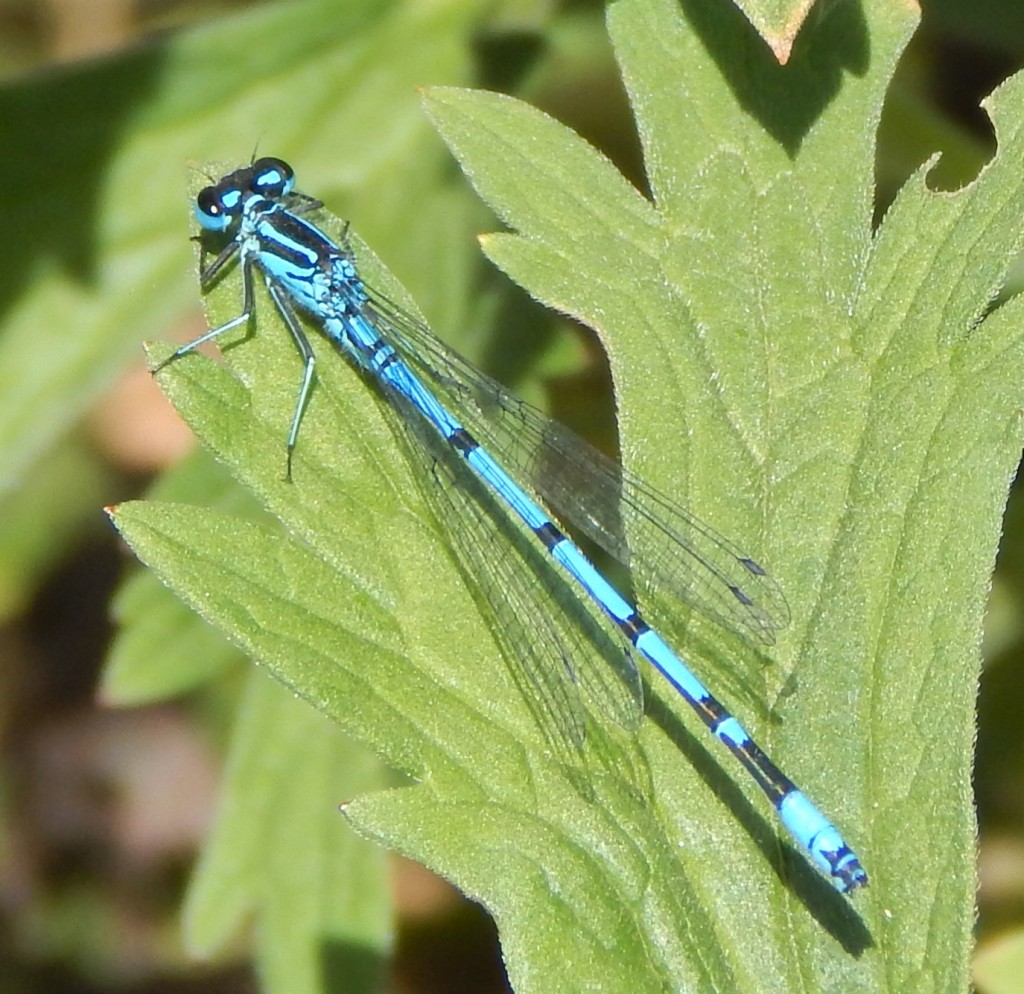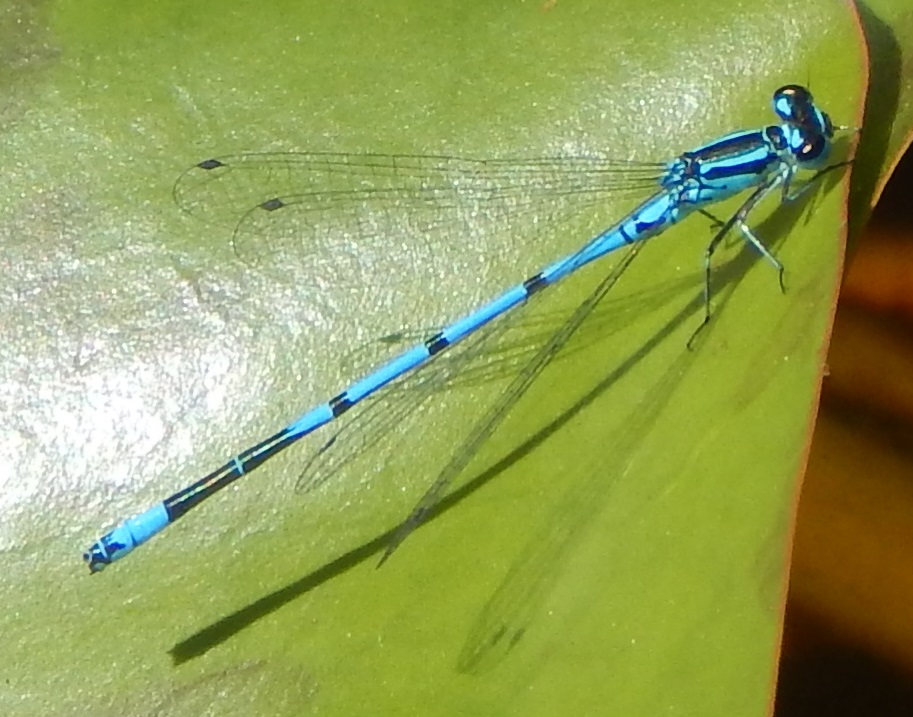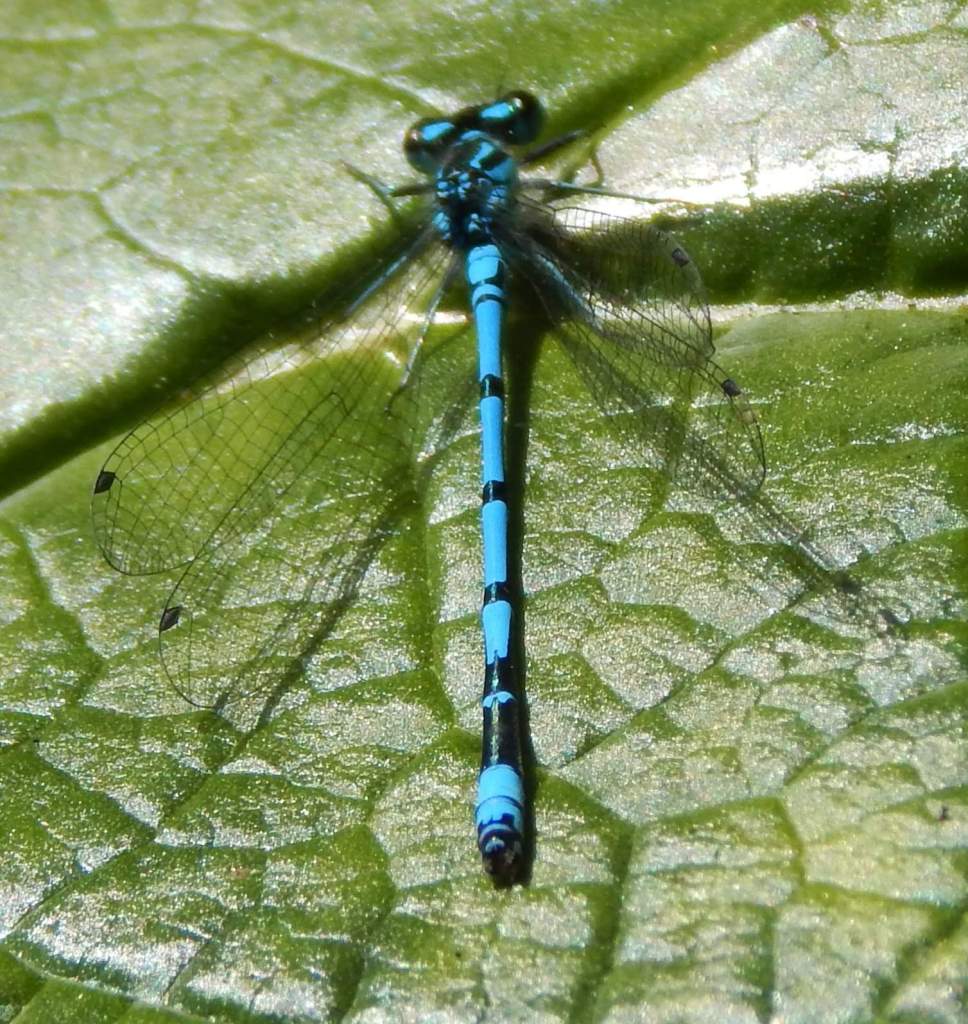
[087] Coenagrion puella, Azure Damselfly
Introduction
Coenagrion puella, the Azure Damselfly, is a widespread light blue and black damselfly, very similar to several other rarer Coenagrion species and to [126] the Common Blue Damselfly.
There are about fifty species of Coenagrion, sometimes known as Bluets, as is the Common Blue, Enallagma cyathigerum.
Taxonomy
Kingdom – Animals
Phylum – Arthropods
Class – Insects
Order – Odonata (Dragonflies and Damselflies)
Suborder – Zygoptera (Damselflies)
Family – Coenagrionidae
Genus – Coenagrion
Scientific Name – Coenagrion puella
Name
It is a sort of azure colour but it is virtually the same colour as the Common Blue Damselfly.
Wikipedia is delightfully vague and suggests that Coenagrion may come from the Greek root ‘coen’ (shared or common) and ‘agrio’ (fields or wild.) Puella means girl (or perhaps damsel.)
Description
Coenagrion puella is damselfly, more typical in size and shape than [064] Calopteryx, with narrower wings.
The male has a light blue body with black markings.



Females are normally green in colour with most of the back marked black.
The nymphs are aquatic and live for one year (or two at the Northern limit), feeding on vegetation and small invertebrates.
Habitat and use
It is common and widespread all over the UK except the North of Scotland, and is also very common over most of Europe.
Other Notes
Although widespread, the Azure damselfly is much less common than the Common Blue.
See also
[126] is its more common relative. There are about half a dozen other Coenagrion species sometimes seen in Britain but these are much rarer with very limited distribution.
I will not go into the very small differences in markings.
